Blog
Mastering Podcast Audio Production
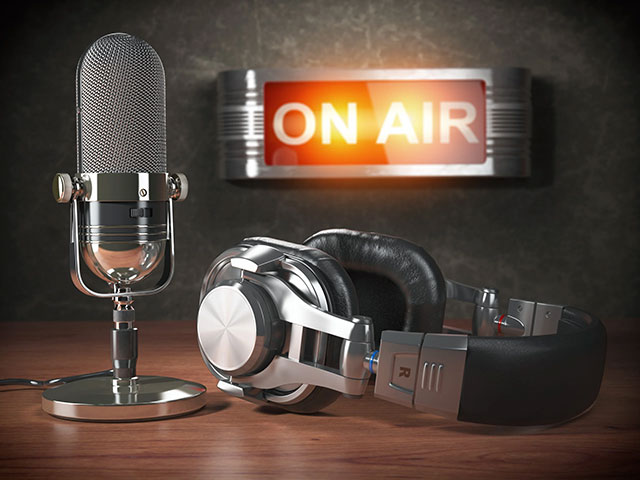 Podcasting has become an increasingly popular medium for entertainment and education, with millions of people tuning in to their favorite shows daily. Fundamentally, podcasting is simply recording audio content that can be downloaded and listened to anytime. However, creating a successful podcast takes more than just recording yourself talking into a microphone. One of the most critical aspects of podcasting is the audio quality.
Podcasting has become an increasingly popular medium for entertainment and education, with millions of people tuning in to their favorite shows daily. Fundamentally, podcasting is simply recording audio content that can be downloaded and listened to anytime. However, creating a successful podcast takes more than just recording yourself talking into a microphone. One of the most critical aspects of podcasting is the audio quality.
Click here to try our free online Audio File Cleaner which works particularly well with podcasts.
Good audio quality is essential in podcasting, as it can make or break the success of a show. Poor audio quality can be distracting and difficult to listen to, making it hard for your audience to stay engaged with your content. On the other hand, high-quality audio can create a more immersive experience for your listeners and help to establish your brand as professional and trustworthy.
This article will cover everything you need to master the skills of podcast audio production. We'll start by explaining what audio production is and why it's essential for podcasting. We'll then dive into setting up your recording space, choosing the right microphone, recording techniques, editing audio, adding music and sound effects and post-production. Each topic will cover the main subheadings, providing a comprehensive and detailed guide to podcast audio production.
Understanding Podcast Audio Production
What is Audio Production?
When creating a podcast, the quality of the audio is crucial. Audio production refers to recording, editing and enhancing audio files to create a professional and polished final product. This process involves using various tools and techniques to ensure the audio sounds clear, crisp and balanced.
Importance of Podcast Audio Production
Audio production is essential for podcasting because it can significantly affect the overall listening experience of your audience. Poor audio quality can be distracting and make it difficult for listeners to engage fully with your content. On the other hand, well-produced audio can enhance the quality of your podcast and help you build a loyal following of listeners.
Elements of Podcast Audio Production
Several key audio production elements are essential to consider when creating a podcast. These elements include:
- Microphones
The type of microphone you use can significantly impact the quality of your audio. It's essential to choose a microphone that's suited to your specific needs and budget.
- Recording Environment
The environment in which you record your podcast can also impact the quality of your audio. Choosing a quiet and controlled environment is essential to ensure no unwanted noises or distractions.
- Editing
Once you've recorded your audio, editing involves refining the content and removing unwanted noise or mistakes. This includes adjusting levels, eliminating background noise and cutting out unnecessary parts.
- Mixing
Mixing involves blending different audio tracks to create a balanced and cohesive final product. This includes adjusting volume levels, panning and adding effects.
- Mastering
Mastering is the final step in the audio production process and involves preparing the audio file for distribution. This includes adjusting the overall volume levels, ensuring the audio is optimized for different playback systems, and adding final touches to the audio file.
By understanding these essential elements of audio production, you can ensure your podcast has high-quality audio to engage your listeners and help you build a loyal following.
Setting Up Your Recording Space
Choosing a Room
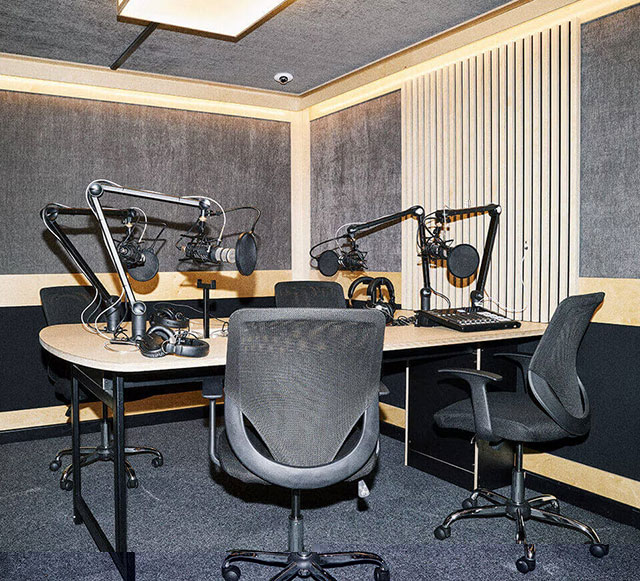 When setting up your recording space, one of the most important factors is the room you'll be recording in. Ideally, you want to choose a room that's relatively quiet and doesn't have too much echo or reverb. A small, enclosed space with many soft surfaces is usually the best option. You'll also want to choose an area free from distracting sounds or noises that could interfere with your recording.
When setting up your recording space, one of the most important factors is the room you'll be recording in. Ideally, you want to choose a room that's relatively quiet and doesn't have too much echo or reverb. A small, enclosed space with many soft surfaces is usually the best option. You'll also want to choose an area free from distracting sounds or noises that could interfere with your recording.
Room Acoustics
The acoustics of the room you're recording in can significantly impact the quality of your audio. To ensure the best possible sound quality, you'll want to minimize any unwanted reflections or echoes in the room. This can be achieved by adding sound-absorbing materials to the walls, floor and ceiling. Common sound-absorbing materials include acoustic foam, sound blankets and carpets.
Soundproofing
Soundproofing blocks external noise from entering your recording space and prevents any sound from leaking out. This is important to ensure that your recording isn't interrupted by external noise or other sounds that might distract your listeners. Soundproofing can be achieved using acoustic panels, double-glazed windows, and other materials.
Setting Up Recording Equipment
Once you've chosen and prepared your recording space, the next step is to set up your recording equipment. This typically includes a microphone, an audio interface, headphones and recording software. It's essential to choose high-quality equipment suitable for podcasting and ensure everything is set up correctly. You'll also want to test your equipment and ensure you get the best possible sound quality before recording.
In summary, setting up your recording space is crucial in producing high-quality audio for your podcast. You can create clean, clear audio free from distracting noises or interruptions by choosing the right room, optimizing the acoustics, soundproofing the area, and setting up your recording equipment correctly.
Choosing the Right Microphone
Types of Microphones
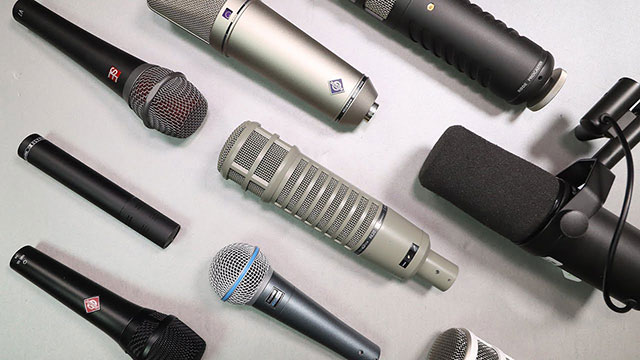 Choosing the right microphone is essential for good audio quality in podcasting. Several types of microphones available on the market can be used for podcasting. The most common podcast microphones are dynamic, condenser and ribbon microphones.
Choosing the right microphone is essential for good audio quality in podcasting. Several types of microphones available on the market can be used for podcasting. The most common podcast microphones are dynamic, condenser and ribbon microphones.
- Dynamic Microphones
Dynamic microphones are the most commonly used microphones in podcasting. These microphones are very robust and can handle high sound pressure levels. They are also affordable, require no external power source and are ideal for recording in noisy environments.
- Condenser Microphones
Condenser microphones are more sensitive and require an external power source, usually provided by a mixer or an audio interface. They are ideal for recording in quiet environments and can produce a more detailed sound than dynamic microphones.
- Ribbon Microphones
Ribbon microphones are less commonly used in podcasting but can produce a warm and natural sound. They are very sensitive and require a preamp with a high gain. Ribbon microphones are ideal for recording vocals and acoustic instruments.
Characteristics of a Good Podcast Microphone
When choosing a microphone for podcasting, there are several characteristics you should consider:
- Directionality
Microphones can be directional or omnidirectional. Directional microphones pick up sound from a specific direction, while omnidirectional microphones pick up sound from all directions. A directional microphone is usually preferred for podcasting, as it can help eliminate background noise.
- Frequency Response
Microphones have different frequency responses, determining the range of frequencies they can pick up. A microphone with a flat frequency response is usually preferred for podcasting, as it can capture a wide range of frequencies without any emphasis on specific frequencies.
- Sensitivity
Microphone sensitivity refers to the sound pressure required to produce a signal. A high-sensitivity microphone will pick up even the slightest sounds, while a low-sensitivity microphone will require more sound pressure to produce a signal. A medium-sensitivity microphone is usually preferred for podcasting, as it can capture a wide range of sounds without being too sensitive to background noise.
Microphone Placement
The placement of your microphone is also essential for good audio quality. When recording a podcast, placing the microphone close to the speaker's mouth is necessary to capture a clear and consistent sound. The distance between the speaker and the microphone should be approximately 6 to 12 inches. It's also necessary to avoid placing the microphone too close to the mouth, which can cause popping sounds and breathing noises. A pop filter or windscreen can help reduce these noises.
Recording Techniques for Podcasts
Mic Technique
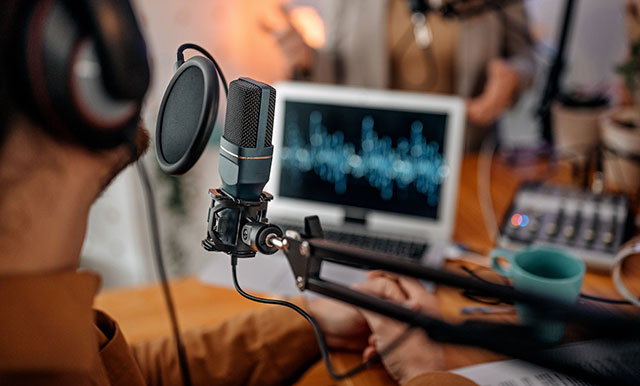 Mic technique refers to how the podcaster uses the microphone during recording to capture the best sound possible. A good mic technique will produce clear and consistent audio, while a poor mic technique can lead to excessive post-production work to fix the sound. Here are some tips for mic technique:
Mic technique refers to how the podcaster uses the microphone during recording to capture the best sound possible. A good mic technique will produce clear and consistent audio, while a poor mic technique can lead to excessive post-production work to fix the sound. Here are some tips for mic technique:
- Position the microphone properly
Place the microphone a few inches away from the mouth but not too close so that it causes distortion or too far that it picks up too much background noise. The microphone's angle should be directed toward the mouth, not directly at it.
- Speak directly into the microphone
Speak directly into the microphone, especially when addressing the audience. If the speaker turns their head away from the microphone, the sound will become muffled and harder to hear.
- Use a pop filter
A pop filter is a device that attaches to the microphone and reduces popping sounds caused by air hitting the microphone diaphragm. This is particularly important for plosives like "p" and "b" sounds.
- Avoid touching the microphone
Avoid touching the microphone during recording, which can cause unwanted noise or static.
Recording with Multiple Microphones
If you're recording with multiple microphones, there are some additional considerations to keep in mind:
- Position each microphone correctly
Each microphone should be positioned to capture the intended sound source without picking up too much background noise or other sounds. Testing the setup before recording is important to ensure that each microphone works properly and picks up the desired sound.
- Use headphones
If possible, each person speaking should wear headphones to monitor their voice and the sound quality of the recording. This can help prevent issues like one person being too loud or quiet in the final recording.
- Adjust levels
Before recording, make sure that the levels of each microphone are balanced and adjusted to capture the best sound. This can help prevent one person's voice from overpowering the others.
Tips for Recording Voiceovers and Interviews
When recording voiceovers or interviews, there are a few additional tips to keep in mind:
- Choose a quiet environment
Ensure the recording environment is as quiet as possible to prevent unwanted background noise or distractions from appearing in the final recording.
- Use a script or outline
Prepare a script or outline of what you plan to say before recording to ensure that you stay on track and don't forget important points.
- Record multiple takes
Record multiple takes of each segment to ensure that you have enough options to choose from in post-production. This can help prevent issues like stumbling over words or losing your train of thought.
By following these recording techniques, you can ensure that your podcast sounds professional and polished.
Editing Audio for Podcasts
Understanding Audio Editing Software
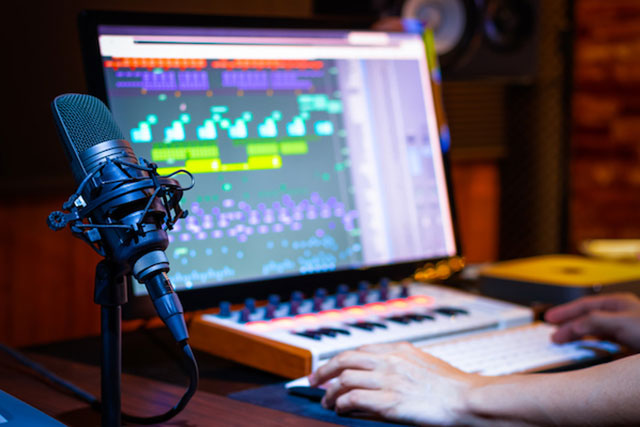 When it comes to editing audio for your podcast, you'll need to choose an audio editing software that suits your needs. Some popular audio editing software options include Adobe Audition, Audacity and GarageBand. Each option has its features and benefits, so you'll want to research to determine which one is best for you.
When it comes to editing audio for your podcast, you'll need to choose an audio editing software that suits your needs. Some popular audio editing software options include Adobe Audition, Audacity and GarageBand. Each option has its features and benefits, so you'll want to research to determine which one is best for you.
Editing Podcasts for Clarity and Cohesion
Editing your podcast audio is crucial in creating a polished and professional final product. One important aspect of audio editing is ensuring clarity and cohesion. This means making sure your audio is easy to understand and flows smoothly. Here are some tips for achieving this:
- Cut out unnecessary pauses, "ums," and "ahs" to keep the conversation flowing smoothly
- Use fade-ins and fade-outs to create a natural transition between different segments of your podcast
- Use music and sound effects to enhance the mood and tone of your podcast
- Use equalization to balance the levels of each audio track and ensure a consistent volume throughout the episode
Removing Background Noise
Background noise can be a significant distraction in your podcast audio, so removing it as much as possible is essential. Here are some techniques for eliminating background noise:
- Use noise reduction software to remove unwanted background noise
- Record in a quiet room with minimal background noise
- Use a high-quality microphone to reduce background noise
Equalizing and Compressing Audio
Equalizing and compressing audio are two critical techniques used in audio editing for podcasts. Equalization involves adjusting the levels of different frequencies in your audio, while compression consists of reducing the dynamic range of your audio to make it easier to listen to. Here are some tips for equalizing and compressing audio for your podcast:
- Use equalization to adjust the levels of different frequencies in your audio, such as boosting the treble for clearer vocals. This is done by increasing or cutting specific frequencies to enhance or reduce their presence in the mix. It can be used to improve clarity and intelligibility, remove unwanted sounds, or shape the overall tone of the recording.
- Use compression to smooth out the dynamic range of your audio, making it easier to listen to on different devices. This means that the loud parts of the recording are reduced in volume while the quieter parts are boosted. Compression is often used to make the audio sound more consistent and to prevent peaks from clipping or distorting the recording.
- Experiment with different equalization and compression settings to find the right balance for your podcast. Use a parametric equalizer to target specific frequencies and make subtle adjustments. When compressing the audio, use a gentle ratio and adjust the threshold to only affect the loudest parts of the recording.
Regarding equalization and compression for podcasts, it's essential to approach these tools with care. Overuse of either can result in a distorted or unnatural sound. However, when used correctly, they can help to improve the overall quality of the recording.
Once you've applied equalization and compression, listen to the recording to ensure it still sounds natural and clear. Remember, the goal is to enhance the audio quality, not to make it sound over-processed or artificial.
With a bit of practice and experimentation, you can use equalization and compression to take your podcast audio to the next level.
Adding Music and Sound Effects
Choosing Music for Podcasts
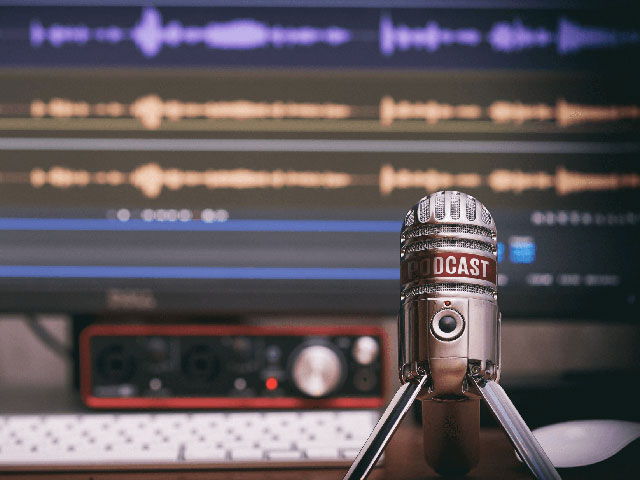 Choosing the right music for your podcast can enhance the listening experience and set the tone for your show. When selecting music for your podcast, consider the following:
Choosing the right music for your podcast can enhance the listening experience and set the tone for your show. When selecting music for your podcast, consider the following:
- Genre
Consider the tone and mood of your podcast and choose music that fits the theme. For example, if your podcast is about horror stories, you may want to select music with a dark and eerie vibe.
- Copyright
Ensure that the music you choose is legal to use in your podcast. You can use royalty-free music or purchase a license to use copyrighted music.
- Length
Choose music that's the appropriate length for your intro, outro, or background music. Typically, intro music is shorter than outro or background music.
- Instrumentation
Consider the instruments used in the music and how they fit with the tone and theme of your podcast.
Adding Sound Effects
Adding sound effects to your podcast can make it more engaging and immersive for listeners. Here are some tips for using sound effects:
- Choose appropriate sound effects
Select sound effects that fit the theme and tone of your podcast. For example, if you're telling a story about a thunderstorm, adding sound effects of thunder and rain can help set the scene.
- Use sound effects sparingly
Too many sound effects can be overwhelming for listeners. Use them sparingly to enhance special moments in your podcast.
- Mix sound effects and music
Mix sound effects and music to create a more immersive experience for your listeners. For example, adding sound effects of a car engine revving while playing driving music can create a more realistic driving experience.
Mixing Audio Tracks
Mixing audio tracks involves adjusting the levels and EQ of different audio elements to create a balanced and cohesive listening experience. Here are some tips for mixing audio tracks:
- Adjust levels
Ensure that the levels of your audio tracks are balanced so that no element overpowers the others.
- EQ
Equalize each track to remove unwanted frequencies and ensure each element is clear and distinct.
- Panning
Adjust the panning of each track to create a sense of space and depth in your podcast. For example, it may help to pan music to the left and right speakers and pan dialogue to the center.
- Compression
Apply compression to your tracks to even out the volume and ensure that subtle elements are audible and loud sections don't overpower the other elements.
By following these tips, you can effectively add music and sound effects to your podcast and mix the audio tracks to create a professional and immersive listening experience for your audience.
Post-Production
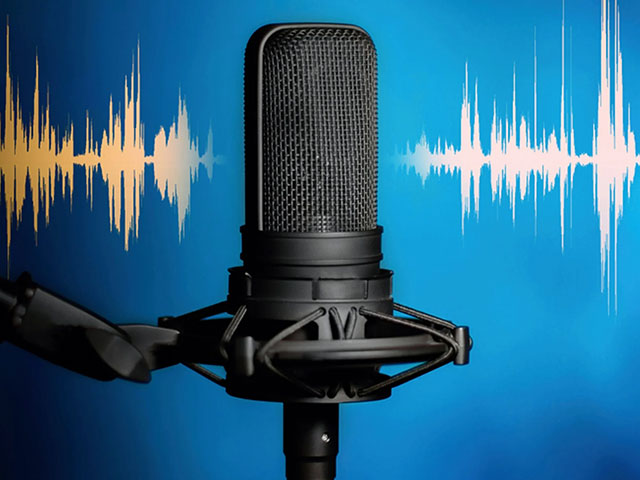 Once you've finished editing your podcast, it's time to focus on post-production tasks to ensure that your podcast sounds its best. In this section, we'll cover the essential steps you need to take to master your podcast for the best sound quality and export and share it with your audience.
Once you've finished editing your podcast, it's time to focus on post-production tasks to ensure that your podcast sounds its best. In this section, we'll cover the essential steps you need to take to master your podcast for the best sound quality and export and share it with your audience.
Mastering Your Podcast for the Best Sound Quality
Mastering your podcast is the final stage of post-production, where you make the necessary tweaks to improve the overall sound quality of your podcast. This process involves ensuring that your podcast has the right loudness level, applying finishing touches to the sound and checking for any errors or glitches. Here are the steps you can follow to master your podcast:
- Normalize the Audio
Normalizing adjusts the volume level of the podcast to the recommended standard levels. You can use software like Audacity or Adobe Audition to normalize your podcast.
- Apply Compression
Compression helps to balance the volume of the different parts of the podcast. It ensures that the louder parts are not too loud and the softer parts are not too quiet. Apply compression to your podcast using a compressor plugin to achieve a more uniform sound.
- Equalize the Audio
Equalization adjusts the audio frequencies to improve clarity and balance. Use an equalizer plugin to fine-tune the sound of your podcast.
- Remove Background Noise
Use noise reduction plugins to remove unwanted noise from your podcast, such as hums, hisses and other background noise. For example, you can find our free online Audio File Denoiser here.
- Check for Errors
Listen to your podcast again to ensure it's free of errors or glitches. If you find any, go back and fix them.
Exporting and Sharing Your Podcast
Once you've mastered your podcast, it's time to export and share it with your audience. Here are the steps you can follow to export and share your podcast:
- Export Your Podcast
Export your podcast as an MP3 file with a bit rate of at least 128 kbps. This will ensure that your podcast has good sound quality and is compatible with most podcast players.
- Add ID3 Tags
ID3 tags are metadata that provide information about your podcast, such as the title, artist and album. Add ID3 tags to your podcast using software like iTunes or ID3 Editor. For example, you can find our free online Audio Tag Editor here.
- Host Your Podcast
You'll need to host your podcast on a podcast hosting platform such as Buzzsprout, Libsyn, or Podbean. These platforms will help you distribute your podcast to different podcast players.
- Submit Your Podcast to Directories
Submit your podcast to different directories such as Apple Podcasts, Spotify and Google Podcasts to make it easily discoverable to your audience.
By following these steps, you can ensure that your podcast is high quality and easily accessible to your audience.
Conclusion
In this article, we've explored the various aspects of audio production for podcasts. We've discussed the importance of good audio quality in podcasting and how it can impact the success of a podcast. We've also covered audio production elements, setting up a recording space, choosing the right microphone, recording techniques, editing audio and adding music and sound effects.
Podcasting has come a long way since its inception and has emerged as a powerful tool for storytelling, education and entertainment. With the rise of new technologies and platforms, the future of podcasting looks promising. It's now easier than ever to produce high-quality podcasts and reach a global audience. As podcasting continues to evolve, staying up-to-date with the latest trends and techniques is essential to make the best possible content.
In conclusion, producing a podcast requires technical skills, creativity and passion. Following the tips and techniques outlined in this article, you can create high-quality audio productions that will engage and entertain your audience. Whether you're an experienced podcaster or just starting, these tips will help you take your podcast to the next level. So, start your podcasting journey today and remember to have fun along the way!
 Podcasting has become an increasingly popular medium for entertainment and education, with millions of people tuning in to their favorite shows daily. Fundamentally, podcasting is simply recording audio content that can be downloaded and listened to anytime. However, creating a successful podcast takes more than just recording yourself talking into a microphone. One of the most critical aspects of podcasting is the audio quality.
Podcasting has become an increasingly popular medium for entertainment and education, with millions of people tuning in to their favorite shows daily. Fundamentally, podcasting is simply recording audio content that can be downloaded and listened to anytime. However, creating a successful podcast takes more than just recording yourself talking into a microphone. One of the most critical aspects of podcasting is the audio quality. When setting up your recording space, one of the most important factors is the room you'll be recording in. Ideally, you want to choose a room that's relatively quiet and doesn't have too much echo or reverb. A small, enclosed space with many soft surfaces is usually the best option. You'll also want to choose an area free from distracting sounds or noises that could interfere with your recording.
When setting up your recording space, one of the most important factors is the room you'll be recording in. Ideally, you want to choose a room that's relatively quiet and doesn't have too much echo or reverb. A small, enclosed space with many soft surfaces is usually the best option. You'll also want to choose an area free from distracting sounds or noises that could interfere with your recording. Choosing the right microphone is essential for good audio quality in podcasting. Several types of microphones available on the market can be used for podcasting. The most common podcast microphones are dynamic, condenser and ribbon microphones.
Choosing the right microphone is essential for good audio quality in podcasting. Several types of microphones available on the market can be used for podcasting. The most common podcast microphones are dynamic, condenser and ribbon microphones. Mic technique refers to how the podcaster uses the microphone during recording to capture the best sound possible. A good mic technique will produce clear and consistent audio, while a poor mic technique can lead to excessive post-production work to fix the sound. Here are some tips for mic technique:
Mic technique refers to how the podcaster uses the microphone during recording to capture the best sound possible. A good mic technique will produce clear and consistent audio, while a poor mic technique can lead to excessive post-production work to fix the sound. Here are some tips for mic technique: When it comes to editing audio for your podcast, you'll need to choose an audio editing software that suits your needs. Some popular audio editing software options include Adobe Audition, Audacity and GarageBand. Each option has its features and benefits, so you'll want to research to determine which one is best for you.
When it comes to editing audio for your podcast, you'll need to choose an audio editing software that suits your needs. Some popular audio editing software options include Adobe Audition, Audacity and GarageBand. Each option has its features and benefits, so you'll want to research to determine which one is best for you. Choosing the right music for your podcast can enhance the listening experience and set the tone for your show. When selecting music for your podcast, consider the following:
Choosing the right music for your podcast can enhance the listening experience and set the tone for your show. When selecting music for your podcast, consider the following: Once you've finished editing your podcast, it's time to focus on post-production tasks to ensure that your podcast sounds its best. In this section, we'll cover the essential steps you need to take to master your podcast for the best sound quality and export and share it with your audience.
Once you've finished editing your podcast, it's time to focus on post-production tasks to ensure that your podcast sounds its best. In this section, we'll cover the essential steps you need to take to master your podcast for the best sound quality and export and share it with your audience.